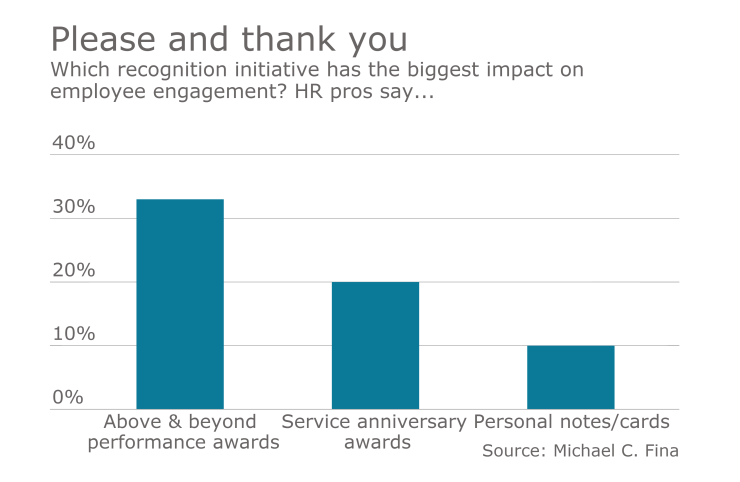Employers are remaining committed to recognizing employees, knowing that by doing so, they are investing in — and hopefully retaining — top talent.
An estimated 89% of employers offer some form of workplace employee recognition program, a figure that is nearly identical to last year’s response, according to the annual study “Trends in employee recognition” that was conducted by WorldatWork, a nonprofit human resources association.
The survey found that more than 50% of employers view these programs as an investment in their workforce. The leading types of recognition programs are based on length of service (85%), above-and-beyond performance (77%) and motivating specific behavior (51%).

Nearly two-thirds of organizations (65%) offer between three and six such programs, with an average of 4.5. More than four-fifths of organizations (87%) offer formal trainings for management on implementing and maintaining recognition programs.
Despite their ubiquity, these workplace perks require the support of managers. The survey found that lack of support from senior management (28%) and the cost of the recognition program (26%) were the top two reasons for not having a recognition program.
And these programs do not come together on a whim — they require funding and a set of clearly-written procedures in order to thrive, WorldatWork says.
The WorldatWork survey found that 55% of employers have written guidelines to lay down the rules of their recognition programs, and 95% of survey respondents said that these programs align with the employer’s overall organizational strategy. The survey also found that 72% of employers have a budget for their recognition programs, and these budgets are usually a mix of funds that are centralized for the entire enterprise and funds held in individual departments.
Though these programs are not a “silver bullet for solving employee retention challenges,” notes Rose Stanley, senior practice leader, WorldatWork, they are a good start.
“The programs themselves may not necessarily retain employees, but the recognition for behavior that benefits the organization does,” she says. “It’s a message relating to the culture of the organization, the leadership and the peers that employees work with.”





